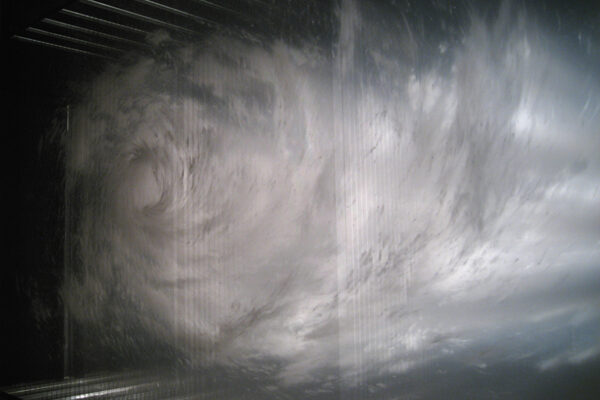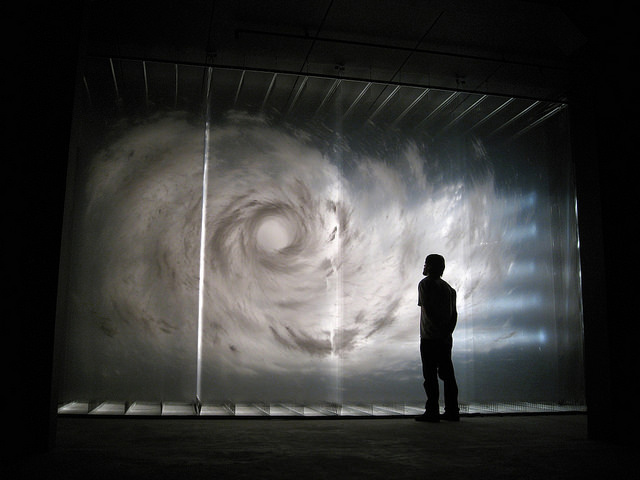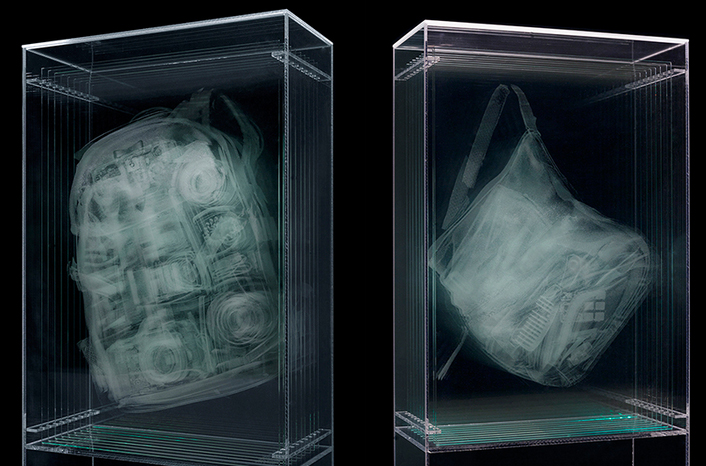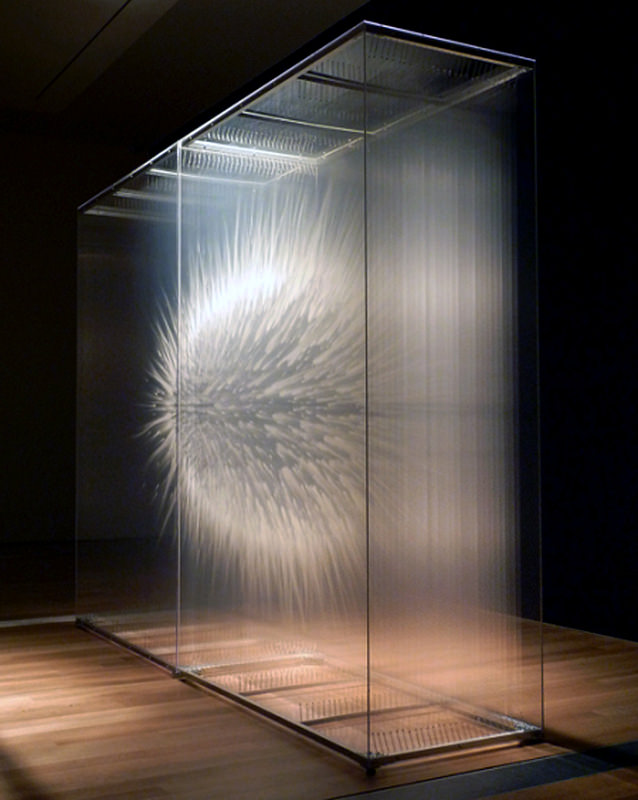Interview with Artist David Spriggs
A lovely piece of art give a sense of the holy in my opinion. Of the sheer vastness of the universe, or of our place in the world. Truly brilliant artists just know how to turn the world upside down and see life differently. Cathedrals give that sense of space and of scale. When I stand in front of a Rembrandt, the beauty of life and the human form blows me away. And for different reasons but to similar effect is why I adore a Van Gogh or a Monet. David Spriggs has a similar effect. When experiencing one of David’s installations it really causes you to consider your own place in the world.
I recently came across the photo above and just stopped cold in my tracks. First, I thought it was voodoo of some sort that was forming these installations in the sky. And when I learned that they were paintings on hundreds (thousands even, depending on the installation) of different clear sheets of glass I was blown away. I had to find this David Spriggs. I had to ask him how the how he was doing this magic. And so I was lucky enough to find him and chat with him via email about his conjuring abilities within the magical kingdom of art. I know that David is a very in demand artist and his time is so very valuable, and I appreciate his taking the time out to chat a bit about his work.
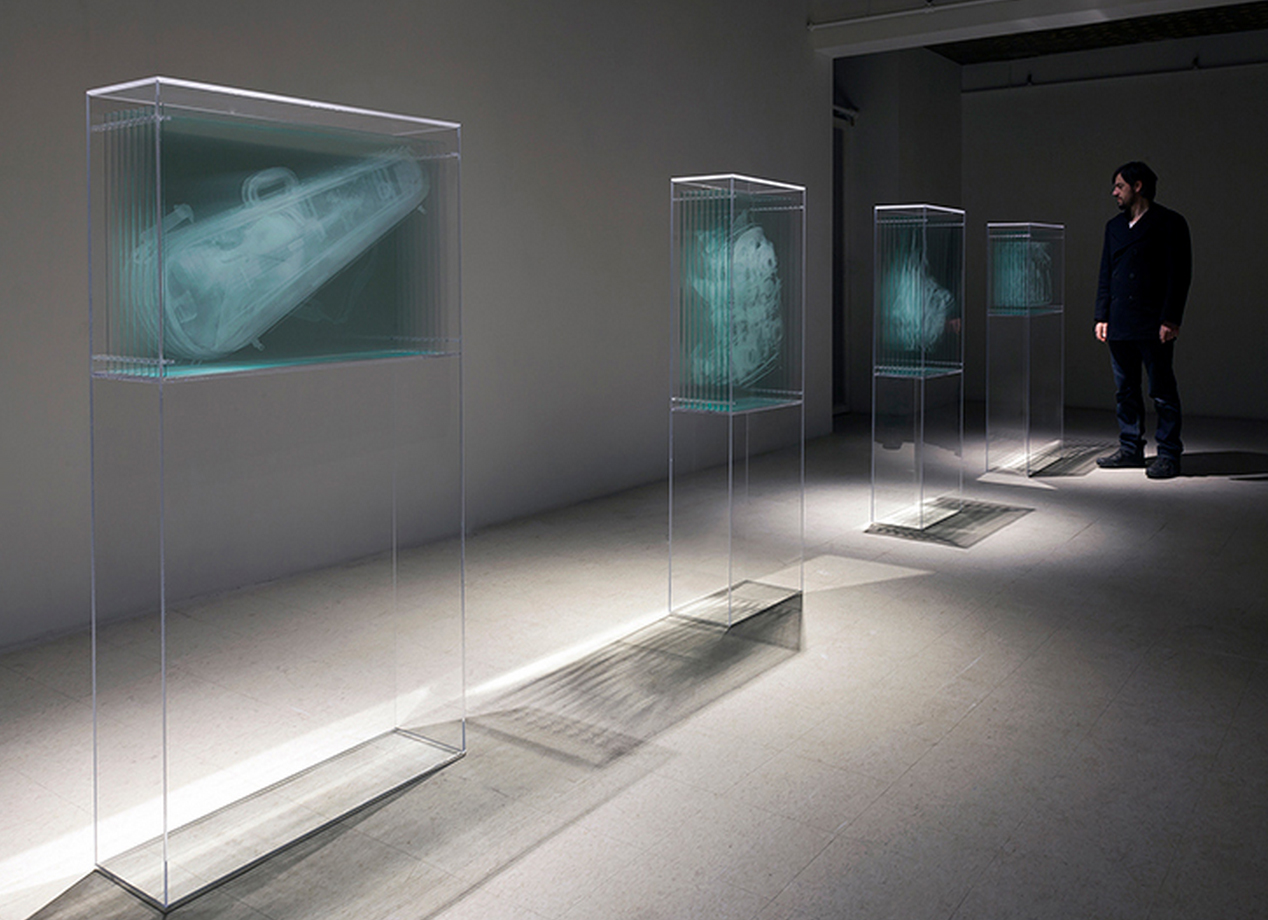

Taylor – In the past (like with Red, or Blue, etc) I could see how you could possibly be a little more experimental as you went on your pieces. But with Transparency Report your pieces are exacting in their 3 dimensional detail. Do you create a topography to paint from? Or how did you find yourself prepping to create one of your Transparency Report pieces?
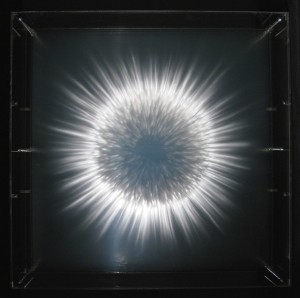
Taylor – What do you want your viewers to come away with after having an encounter with one of your works? What would make it all worth it for you? Specifically with regard to Transparency Report I found myself looking for something incriminating, a gun, or a knife. But obviously that makes no sense. That would be the absolute opposite of what your work would be 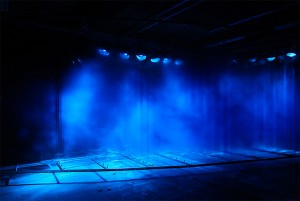
David – I want people to come away with the feeling that all great art has, something that makes the viewer moved and is drawn back to it.
Taylor – Are there other artists that inspire you to push deeper and go farther with your work today?
David – I’m mostly inspired by the old masters, but like the ideas of futurist art and the light and space artists.
—–
After taking a quick gander at the various pieces represented here you have to agree with me that David’s work really does make one stand in awe. The scale of many of his pieces are enormous. To give a sense of some of the scale that he goes through to achieve this effect check this out:
“Sometimes I work by sheet by sheet painting like an animator might work by subtlety changing the imagery on each sheet to achieve the result I want, whereas other times I plan the work completely in advance with a complex topographical mapping of the space and forms. The sheeting is often parallel to one another, one sheet behind another, but sometimes I play with the layering such as in the three storey high installation ‘Red’, where the sheets rise through the space at different angles and heights. Such large works I would design on the computer and realize by hand. These installations require enourmous amounts of time and work to plan, prepare the room, paint, and install. In the artwork ‘Stratachrome’ for example, there are 400 sheets of transparency each hand painted with different imagery. Each sheet is 14 x 5 ft. or 4.2 x 1.5 m, that’s a surface area of 28 000 square ft or 8 534 square metres. All of which had to be hung and lit specifically throughout the span of the gallery.”
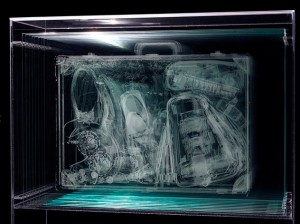
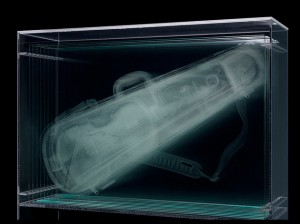
Thanks so much David for your time and your insights into your work. I tried to convince him to create a Kickstarter to generate his works en masse. And that went over like a lead balloon. But I tried everyone. Give me points for trying anyway! I mean, who wouldn’t want to have one of these amazing pieces in your house, gracing your entire main floor?! What? Anyway… thanks David, keep doing what you are doing. We love it.

